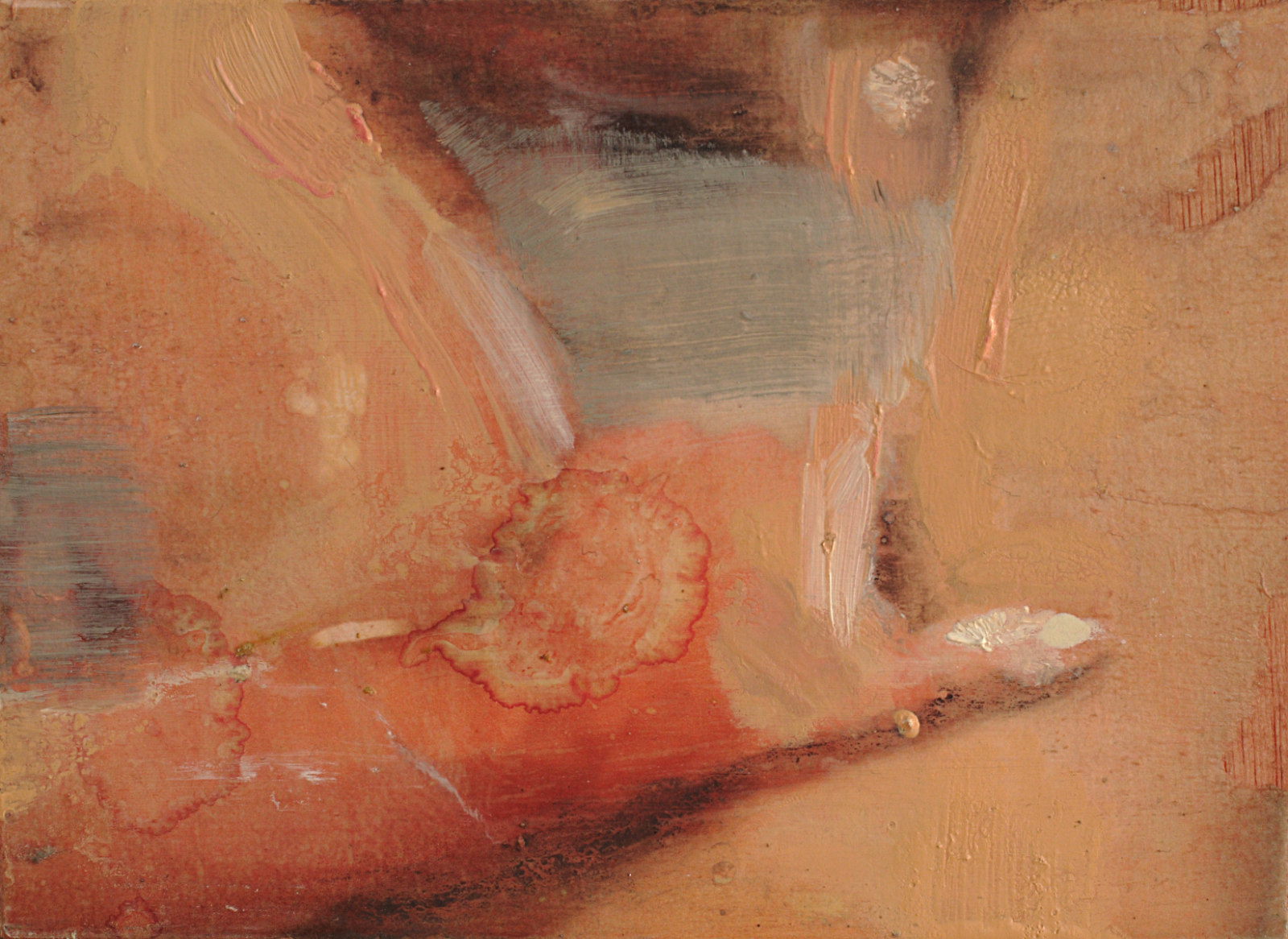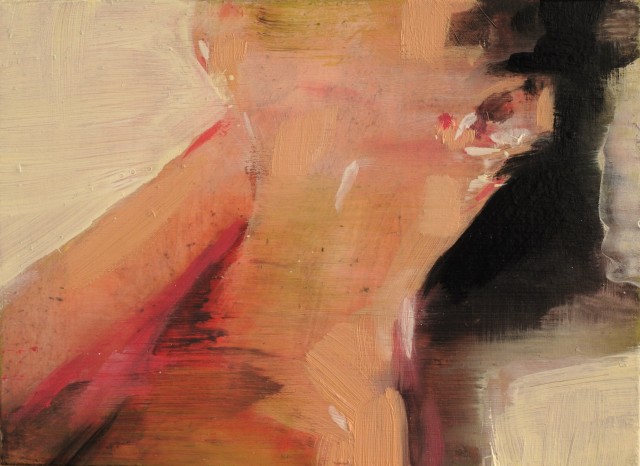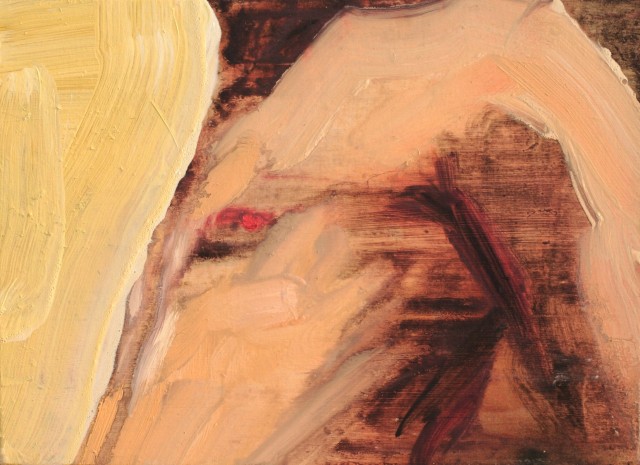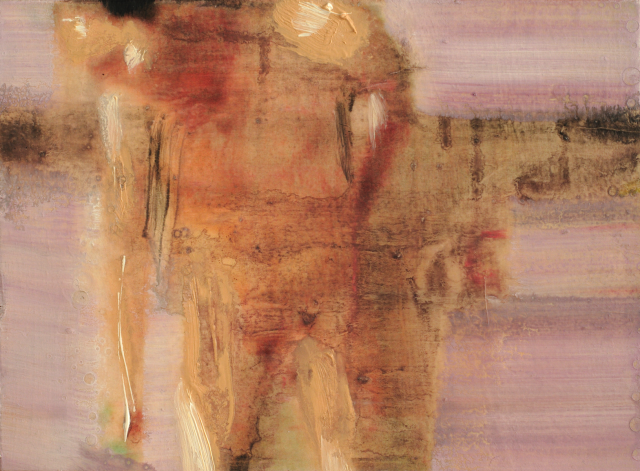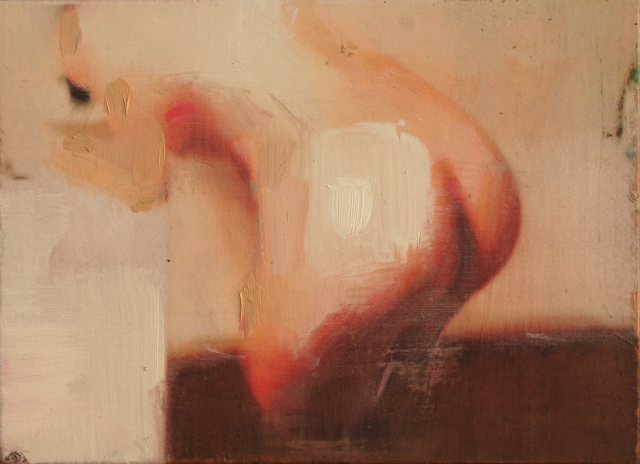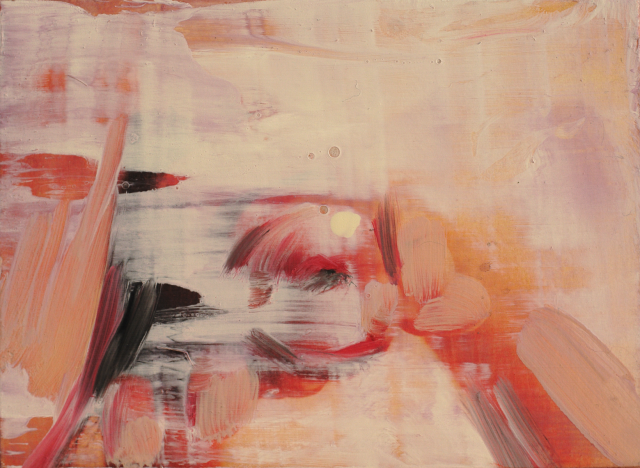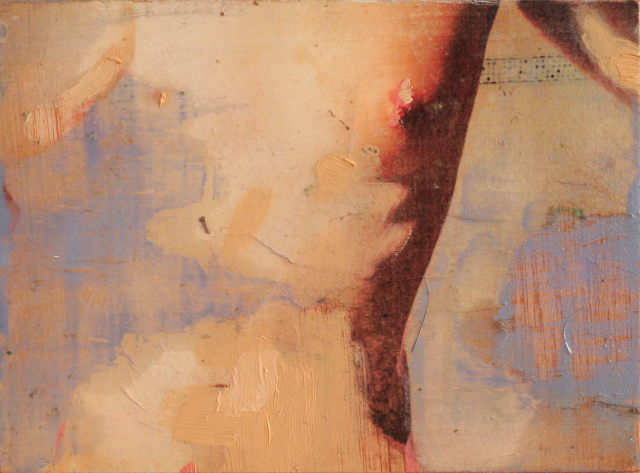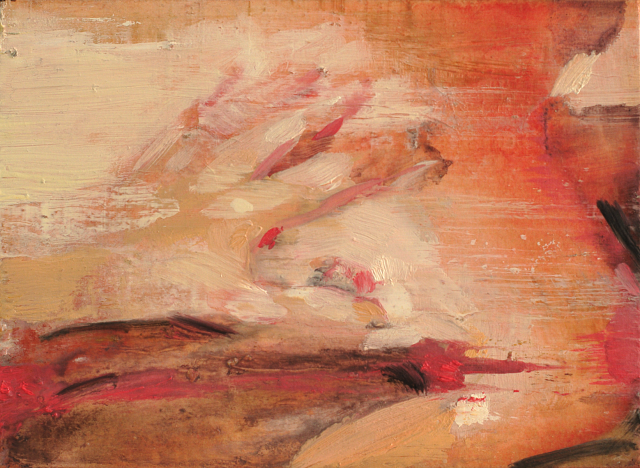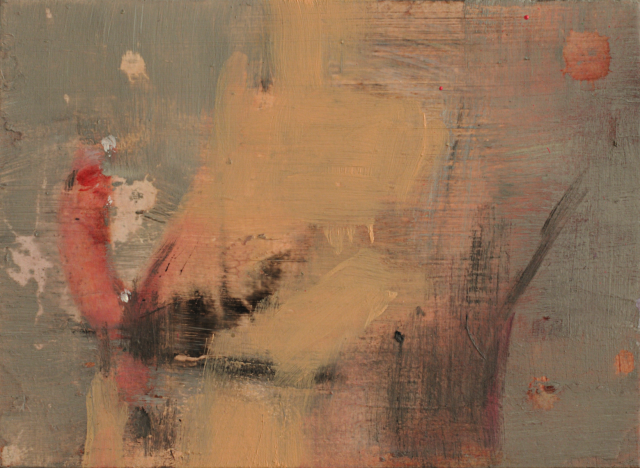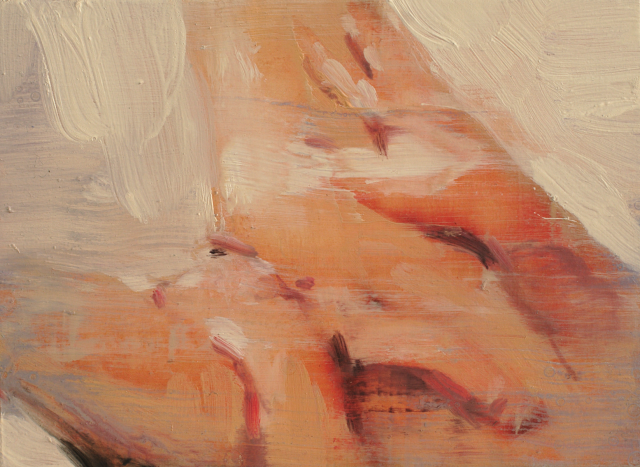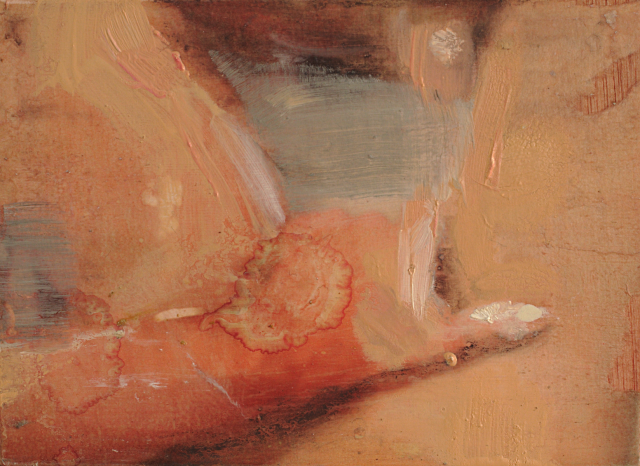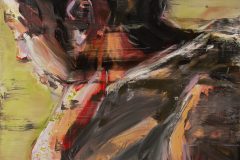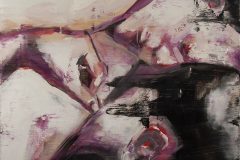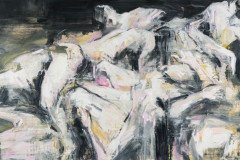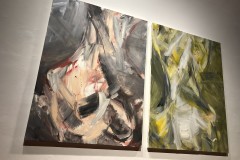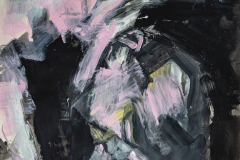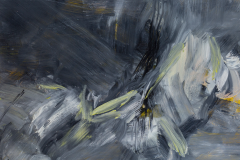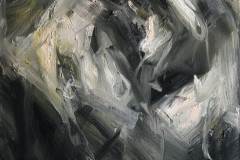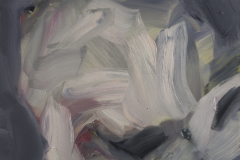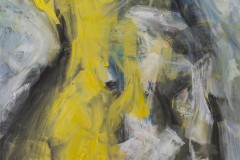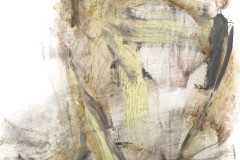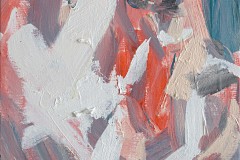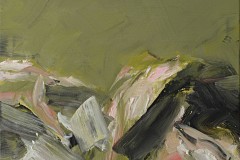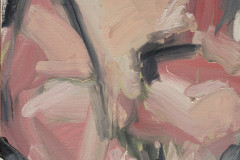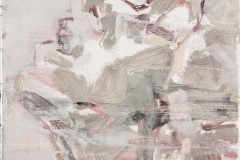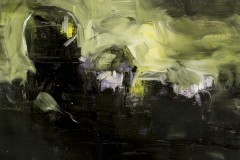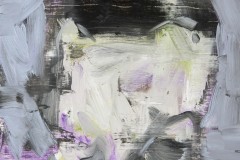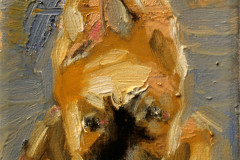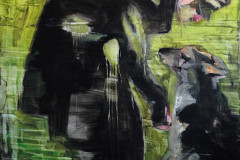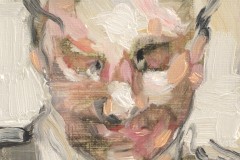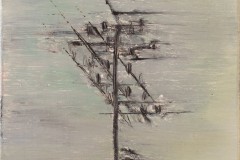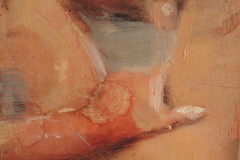WHAT WE EXPOSE TO YOU / WAS WIR FÜR EUCH ENTBLÖSSEN
Galerie Queen Anne – Leipzig
March 14th – April 27th, 2014
ZOHAR FRAIMAN (paintings)
PAOLO MAGGIS (paintings)
PETRA MATTHEIS (objects and sculptures)
The artists Zohar Fraiman, Paolo Maggis and Petra Mattheis are approaching the topic of the body from a completely different perspective. Their work is moving away from the aspects of seeing and being seen, posing and hiding, dedication and challenge. And by that, they are creating their own definition of eroticism.
The depiction of eroticism in the paintings of Zohar Fraiman has a sense of something escapistical. It seems as if the protagonists of the pictures want to flee from a confining life situation into a conceived parallel universe, where their phantasies and repressed needs decide about their encounters and finally about their life.
But there is no socially accepted room, even for that desperate escapism. Thus, the lusts blaze their own trails. Delusion and obsession are finally helping to pass the confining limits and create a highly charged but innocent shelter.
Flesh-colored and fragmentary are the ten small format canvases of the Italian painter Paolo Maggis. They can be read as single movie sequences, just to see them assemble to an entity afterwards – an entity of feelings, a memory. The details of a neck, a hand in a crotch, a breast. They are hard to decode as individual pictures because the fragmental depictions complicate the identification and make it almost abstract. Looking at the pictures as
a series, the viewer becomes a witness of stimulated physicality and sexuality. With every new look, he becomes more and more a visually involved.
The physical as well as the sexuality play a major role in the work of Petra Mattheis. Her pieces of work are frames of word images. The words don’t give any kind of comments or orders. Instead they unite the content and the form into a linguistic body. They are pictures which face the viewer as a body, which he experiences as if he was in a room or sometimes as the room itself. The texts describe intimate situations which we rarely allow ourselves,
given that intimacy makes us vulnerable. But this intimacy implies also a connection to the viewer and therefore is a window in the outside.
